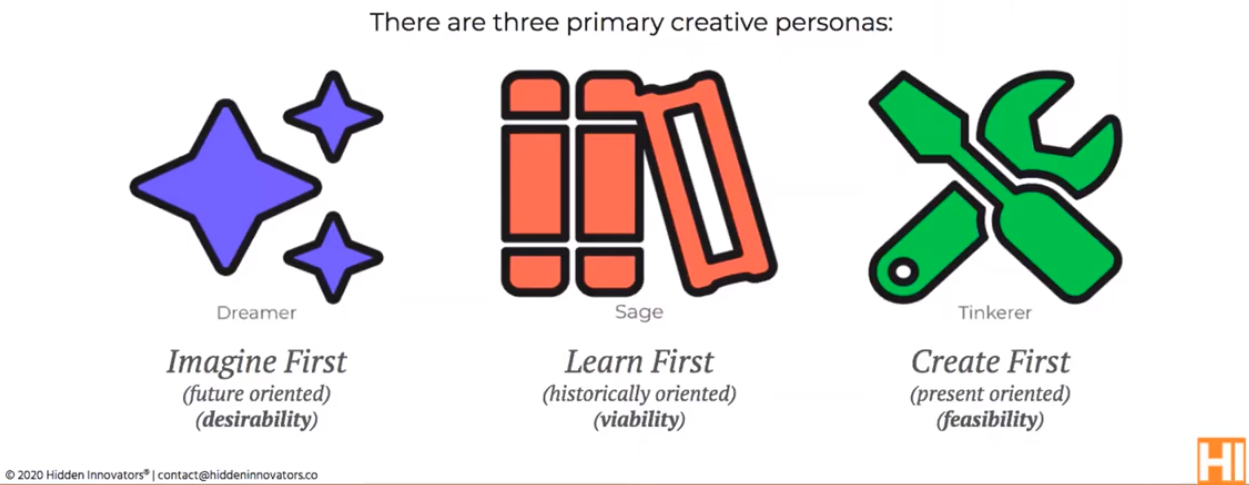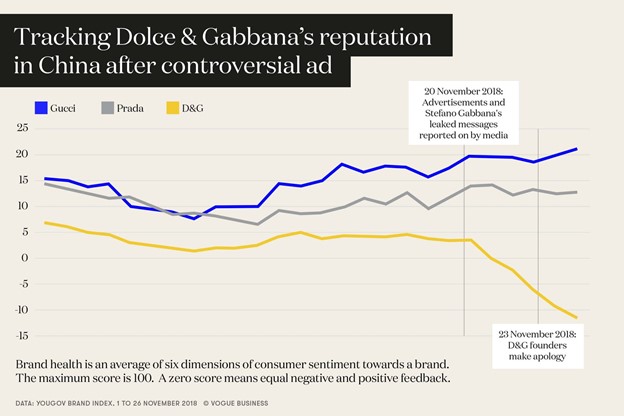Diversity may seem like a modern corporate buzzword but behind the noise is a concept that is integral to the success of innovation and beyond. For example, in the animal kingdom, diversity or biodiversity, referring to the enormous variety of life on earth, is integral to human survival. Diversity also leads to economic growth, and according to a study from Brown University “the interplay between cultural assimilation and cultural diffusion have played a significant role in giving rise to differential patterns of economic development across the globe.”
Just like in the environment and economy, diversity is crucial when it comes to business innovation. Incorporating a diverse range of perspectives into your innovation efforts can bring about a wide array of surprising benefits for your organization. Therefore, in this article, we will explore three of the most important frameworks that you need to consider in order for idea management to become an effective and valuable resource for your company.
The 3 Innovation Diversity Frameworks You Must Consider
1. Social Diversity: The Importance of Perspective
When we think about diversity we might immediately think about race or gender, however this can be limiting. It is important to consider all forms of diversity, including ethnicity, gender, socioeconomic status, political views, religion, and sexual orientation. When ideating, a diverse audience provides you with a wider perspective that can spot potential challenges, issues, and opportunities. With a homogenous audience, idea bias can be rife – you may think you are on to a winning idea, only for it to fail once it has launched to the diverse marketplace.
Take for example when luxury fashion brand Dolce & Gabbana had to cancel a million-dollar fashion show in Shanghai amidst accusations of racism from a poorly thought-out advert. The advert showcased a Chinese woman attempting (and failing) to eat Italian food with chopsticks. The mocking nature of the ad obviously did not go down well with Chinese audiences who abandoned the brand, leaving their sales figures heavily impacted and their brand health score in the negative.
This graph from Vogue Business shows how Dolce & Gabbana’s brand health score plummeted in China amidst their advertisement controversy.
Organizations are now becoming attuned to this. According to the Forbes Insight Study on ‘Fostering Innovation Through a Diverse Workforce’, ‘Companies such as AT&T, Mattel, Intel, and others now have employee groups that foster inclusion within their organizations, and also provide valuable insight into the markets they reflect.”
Organizations have even launched ‘Employee Resource Groups’ that help define products that work for their regions and demographics. Huey Wilson, Vice President of HR, Worldwide Operations at Mattel, said to Forbes, “We have to make sure that we’re culturally sensitive. There have been some big near misses that we might not have avoided without the ERGs.” Mistakes can not only be embarrassing but costly!
The Forbes Insight Study also states, “This is particularly true for the largest companies. Among companies with more than $10 billion in annual revenues, 56% strongly agreed that diversity helps drive innovation.”
Large organizations are now facing diverse challenges with increasingly diverse global customer bases, as such it is important to leverage the perspectives of all available audiences to meet those challenges, and develop unique solutions to drive growth and revenue at your organization.
2. Diversity of Seniority: Getting Everybody on Board
Traditionally in the world of business innovation, there’s a bias towards ‘white collar’ employees. Decisions are often made in head offices by corporate teams rather than front line employees. Obviously, not only does this limit the potential amount of ideas received from those who have a unique perspective on the frontline, but it also inhibits a healthy culture of innovation.
Our clients at Amer Sports, the clothing goods company, understand the importance of this concept. When they adopted an idea management program, they made it clear that they wanted to hear the ideas of all their employees – everyone from blue collar workers to senior management.

They implemented a strategy that would allow them to engage their office-based workers via digital channels, their local intranet, and emails etc. But crucially, they made sure to target the blue-collar workers who worked in the factories, without direct access to a computer. So, they utilized analogue channels, such as posters and notice boards to advertise the idea gathering project, and even built ‘submission stations’ for workers to submit their ideas.
Ultimately, Amer Sports received a fantastic engagement rate of 50%, with over 30% from blue collar workers, and 1500 idea submissions, which resulted in a value per idea of $23k. If the company hadn’t engaged the entirety of their diverse workforce, their ROI would undoubtedly been far lower resulting in a far less successful innovation initiative. They also would not have received the unique perspective that the blue-collar workers offer, ending up with siloed and insufficient results.
Usually, corporate innovation is often top down, however recently bottom-up innovation is becoming more popular. Bottom-up innovation is where ideas come from anywhere in the organization. ‘Employees lead the idea through the innovation process by utilizing relations based upon knowledge, experience, and influence in their network and not so much by navigating company hierarchies’. Utilizing the diversity of perspective from the bottom up, as well as such as your customers, can provide your organization with a more complete picture of where your innovation focus needs to be.
However, this is not to say that senior management and the C-suite aren’t vital to the innovation process. As we said earlier for idea management to be successful, engagement is key, and management must play a key role in leading this. If your audience do not believe that sharing their ideas is a priority, or if they don’t believe that their ideas will be listened to, your initiative is destined to fail. Management must be the ones to lead and validate the initiative by promoting its importance, and ensuring that ideas are listened to, valued, and acted upon. And, you never know your CEO might even have a good idea too! Once every level of your organization works together to innovate, the process will be efficient, streamlined, and idea sharing will become natural to your organization.
3. Creative Diversity: Enhancing the Innovation Process
Not only is social and seniority important for innovation, but so is creative diversity. It can sometimes be assumed that only creative people have ideas, which can lead to bias when choosing innovation teams or your audience for an idea challenge. Yet, it must be understood that everyone is creatively different.
In our webinar, ‘Why Creative Diversity Matters When Creating Teams’ with our partners at Hidden Innovators, we shared the concept of different ‘creative personas’. This suggests that for innovation to be successful, each persona needs to work together for your innovation initiative to be as successful as possible.
According to Hidden Innovators, there are three primary creative personas, the dreamer, the sage, and the tinkerer. These personas each approach innovation differently; the dreamer is the ideal person to give you the ‘spark’ for an idea, the sage is best person to research and develop it, and the tinkerer is the best person to experiment with bringing it to life. So, when put together they can attack a challenge from all angles. The goal is to then bring them together and allow for this diversity to complement each other.

When this is appropriately managed, for example in targeting specific audiences for an idea management challenge or with a carefully curated innovation group, you can effectively and efficiently enhance the innovation process by leveraging this creative diversity.
According to Gallup, the price of failed projects due to costs, time, and resources, ‘represents a loss of $50 billion to $150 billion per year in the United States’. Therefore, adapting your innovation strategy to include these diverse personas within your ideation teams is an extremely valuable and cost-effective way of creating a successful ideation process.
Laying the Foundation: Supporting Diversity and Innovation
Diversity is not just about hitting inclusivity quotas or keeping HR happy, but is a fundamental way of keeping your organization aware of your market, engaged, and efficient. It must also be understood that diversity isn’t binary,
Fundamentally, if you don’t embrace diversity, your competitors will. Not only will they have a deeper understanding of your market but also the products to match. So, it is important that you employ strategic processes and tools that allow you to tap into diverse range of perspectives and opinions, that ensure that your audiences live up to their true potential and contribute effectively.
This requires a sophisticated tool that can be tailored to the unique needs of your individual audiences and allows them to share their ideas without any barriers. The Qmarkets’ platform helps you target your employees and external stakeholders for idea challenges. A broad audience can then collaborate to submit, grow, evaluate, implement, and analyze ideas – all in one place.
You have full flexibility on the campaign creation; workflows and campaigns can even be tailored to target different audiences and personas, and rules set to ensure that only the most relevant ideas advance through the process. Having a platform facilitates collaboration between diverse audiences, with features such as our crowd-voting functionality and community engagement tools. But fundamentally, it allows you to collect, manage, and assess a wide range of ideas so that you can implement ground-breaking innovation at your organization.
Diversity and Innovation is Win-Win
Once diversity is fully embraced and your employees and stakeholders are encouraged to be themselves, a true range of perspectives and opinions will become available to you, and innovation will truly flourish at your organization. When people are given the freedom to share ideas, they will thrive, and you will find that your innovation initiative will too.
These ideas not only lead to better ideas and solutions, but also to increased employee satisfaction, and a healthy culture of innovation that will drive growth and put your company in good stead for the future. Diversity and innovation is not only the right thing to do but can prove invaluable to your organization.
Everyone wins!
To find out how more on how Qmarkets can help you create a culture of diversity and innovation, contact us today for more information, or to request a free product demo.



